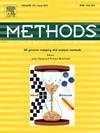A methodological comparison of synthesizing heavy metal substituted bioapatite
IF 4.3
3区 生物学
Q1 BIOCHEMICAL RESEARCH METHODS
引用次数: 0
Abstract
This study evaluates two methods—maturation and direct precipitation—for synthesizing heavy metal substituted biomimetic hydroxyapatite (HA), focusing on their efficacy in mimicking human bone composition and crystallinity. Cobalt (Co) and chromium (Cr) substitutions were investigated due to their relevance to metal-on-metal implant degradation and the potential integration of these ions into bone mineral. The maturation method involves prolonged incubation, producing amorphous and bioresorbable apatites, while the direct precipitation (DP) method achieves rapid synthesis of highly crystalline apatites through controlled titration. Both approaches were characterized using X-ray diffraction (XRD), Raman spectroscopy, and Fourier Transform Infrared (FTIR) spectroscopy, confirming the apatitic nature of the samples and lattice strain induced by metal ion substitution. This study highlights the maturation method’s adaptability for long-term biological interactions and the DP method’s mechanical stability for load-bearing applications. Comparison of the structural and chemical properties of substituted HA from each method provides insights into optimizing synthesis techniques for diverse biomedical applications, such as bone tissue engineering and mitigating the effects of heavy metal ion release on bone health. These findings contribute to advancing hydroxyapatite-based biomaterials tailored for therapeutic and regenerative medicine needs.

合成重金属取代生物磷灰石的方法比较
本研究评估了成熟法和直接沉淀法两种合成重金属取代仿生羟基磷灰石(HA)的方法,重点研究了它们在模拟人骨组成和结晶度方面的效果。由于钴(Co)和铬(Cr)取代与金属对金属植入物降解以及这些离子与骨矿物质的潜在整合相关,因此研究了它们的取代。成熟法需要长时间的孵育,产生无定形和可生物吸收的磷灰石,而直接沉淀法(DP)通过控制滴定实现高结晶磷灰石的快速合成。采用x射线衍射(XRD)、拉曼光谱(Raman)和傅里叶变换红外光谱(FTIR)对两种方法进行了表征,证实了样品的磷灰石性质和金属离子取代引起的晶格应变。这项研究突出了成熟法对长期生物相互作用的适应性和DP法在承重应用中的机械稳定性。比较每种方法中取代的透明质酸的结构和化学性质,为优化各种生物医学应用的合成技术提供了见解,例如骨组织工程和减轻重金属离子释放对骨骼健康的影响。这些发现有助于推进羟基磷灰石为基础的生物材料定制治疗和再生医学的需要。
本文章由计算机程序翻译,如有差异,请以英文原文为准。
求助全文
约1分钟内获得全文
求助全文
来源期刊

Methods
生物-生化研究方法
CiteScore
9.80
自引率
2.10%
发文量
222
审稿时长
11.3 weeks
期刊介绍:
Methods focuses on rapidly developing techniques in the experimental biological and medical sciences.
Each topical issue, organized by a guest editor who is an expert in the area covered, consists solely of invited quality articles by specialist authors, many of them reviews. Issues are devoted to specific technical approaches with emphasis on clear detailed descriptions of protocols that allow them to be reproduced easily. The background information provided enables researchers to understand the principles underlying the methods; other helpful sections include comparisons of alternative methods giving the advantages and disadvantages of particular methods, guidance on avoiding potential pitfalls, and suggestions for troubleshooting.
 求助内容:
求助内容: 应助结果提醒方式:
应助结果提醒方式:


